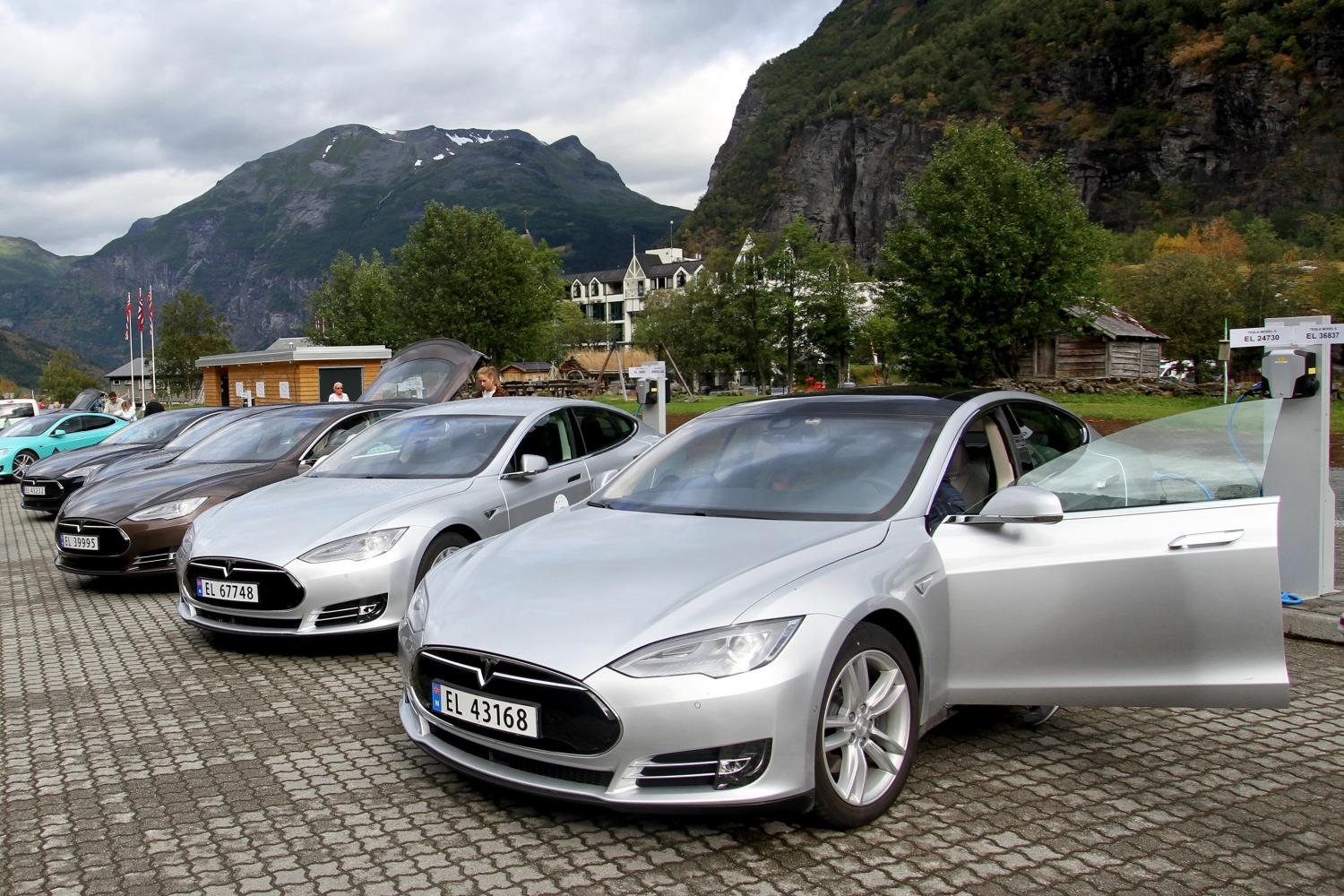Out of every five new cars sold in Norway in the year 2022, four of them were found to be electric vehicles. It is a record for the country’s EV sales. Among the automaker brands, Tesla was the top-selling brand for the second year in a row.

Seeking to become the first nation to end the sale of petrol and diesel cars by 2025, oil-producing Norway has until now exempted battery-powered fully electric vehicles (BEV) from taxes imposed on rivals using internal combustion engines (ICE). The share of new electric vehicles rose to 79.3% in 2022 from 65% in 2021 and from a mere 2.9% a decade ago, the Norwegian Road Federation (OFV) said.
Tesla had a 12.2% share of the overall car market in Norway, making it the number-one brand for a second consecutive year, ahead of Volkswagen with 11.6%. The Tesla Model Y was the single most popular model of the year, ahead of Volkswagen’s electric ID.4 in second place, and Skoda Enyaq in third. In actual figures, 138,265 electric cars were sold last year, representing 79.3% of total passenger car sales. Norway beat its own record in 2021 when 65% of the cars sold were electric ones.
Electrification
Norway has also led the way in switching over to electric cars by offering people several incentives. Most importantly, people were exempt from paying taxes on their electric cars last year, but that changed this year. From January 1, those who buy more expensive electric cars will have to pay VAT or value-added tax on their cars.
While tax exemptions helped cut emissions, they cost the government around $4 billion (€3.7 billion) in revenue losses in 2022, the Finance Ministry said. Those with electric cars also paid a lower toll and public parking fees. Norway, a country of 5.5 million people, aims at having all cars sold by 2025 produce zero emissions, namely electric or hydrogen-powered cars. The Scandinavian country, with a center-left coalition government in power, is also one of the largest producers and exporters of oil.
Recently, Honda also announced that December 31, 2022, was the last day the automaker is going to sell ICE cars. It also included plug-in vehicles. It shows how the progress pushes automakers also reach their electrification goals. Notably, the PHEV market share has been dropping significantly this year compared to last year, while non-plug cars are holding relatively steady in the high single-digit percentages. They may be selling in very small amounts, but you can still get something with an engine in it if you need a niche application. That said, even Svalbard Post has gone all-electric with its medium-duty postal vehicles, so there aren’t a lot of niches left that EVs won’t serve.












